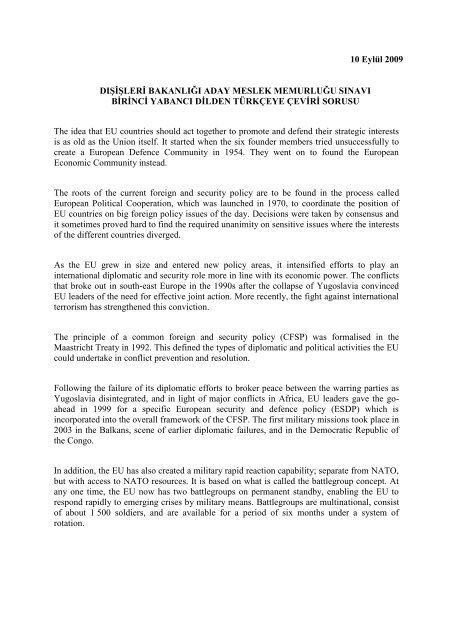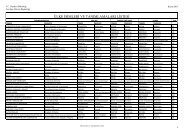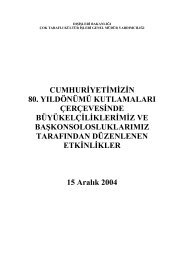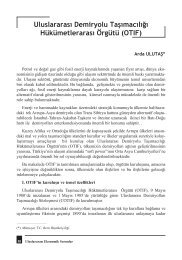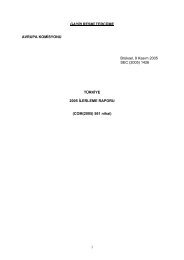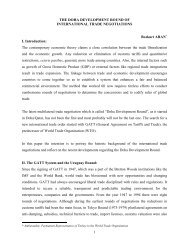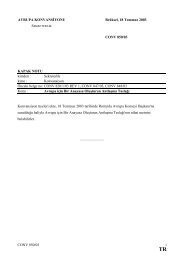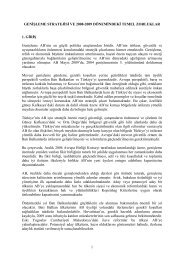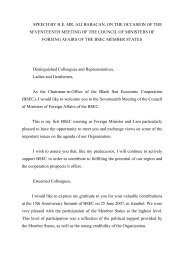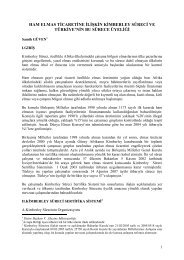DIŞİŞLERİ BAKANLIĞI 2011 YILI ADAY MESLEK MEMURLUĞU ...
DIŞİŞLERİ BAKANLIĞI 2011 YILI ADAY MESLEK MEMURLUĞU ...
DIŞİŞLERİ BAKANLIĞI 2011 YILI ADAY MESLEK MEMURLUĞU ...
Create successful ePaper yourself
Turn your PDF publications into a flip-book with our unique Google optimized e-Paper software.
<strong>DIŞİŞLERİ</strong> <strong>BAKANLIĞI</strong> <strong>ADAY</strong> <strong>MESLEK</strong> <strong>MEMURLUĞU</strong> SINAVI<br />
BİRİNCİ YABANCI DİLDEN TÜRKÇEYE ÇEVİRİ SORUSU<br />
10 Eylül 2009<br />
The idea that EU countries should act together to promote and defend their strategic interests<br />
is as old as the Union itself. It started when the six founder members tried unsuccessfully to<br />
create a European Defence Community in 1954. They went on to found the European<br />
Economic Community instead.<br />
The roots of the current foreign and security policy are to be found in the process called<br />
European Political Cooperation, which was launched in 1970, to coordinate the position of<br />
EU countries on big foreign policy issues of the day. Decisions were taken by consensus and<br />
it sometimes proved hard to find the required unanimity on sensitive issues where the interests<br />
of the different countries diverged.<br />
As the EU grew in size and entered new policy areas, it intensified efforts to play an<br />
international diplomatic and security role more in line with its economic power. The conflicts<br />
that broke out in south-east Europe in the 1990s after the collapse of Yugoslavia convinced<br />
EU leaders of the need for effective joint action. More recently, the fight against international<br />
terrorism has strengthened this conviction.<br />
The principle of a common foreign and security policy (CFSP) was formalised in the<br />
Maastricht Treaty in 1992. This defined the types of diplomatic and political activities the EU<br />
could undertake in conflict prevention and resolution.<br />
Following the failure of its diplomatic efforts to broker peace between the warring parties as<br />
Yugoslavia disintegrated, and in light of major conflicts in Africa, EU leaders gave the goahead<br />
in 1999 for a specific European security and defence policy (ESDP) which is<br />
incorporated into the overall framework of the CFSP. The first military missions took place in<br />
2003 in the Balkans, scene of earlier diplomatic failures, and in the Democratic Republic of<br />
the Congo.<br />
In addition, the EU has also created a military rapid reaction capability; separate from NATO,<br />
but with access to NATO resources. It is based on what is called the battlegroup concept. At<br />
any one time, the EU now has two battlegroups on permanent standby, enabling the EU to<br />
respond rapidly to emerging crises by military means. Battlegroups are multinational, consist<br />
of about 1 500 soldiers, and are available for a period of six months under a system of<br />
rotation.


